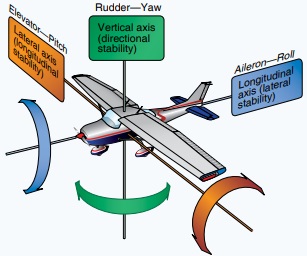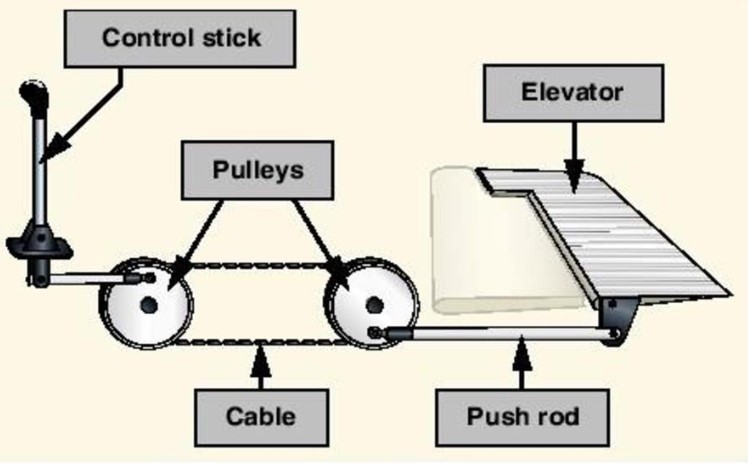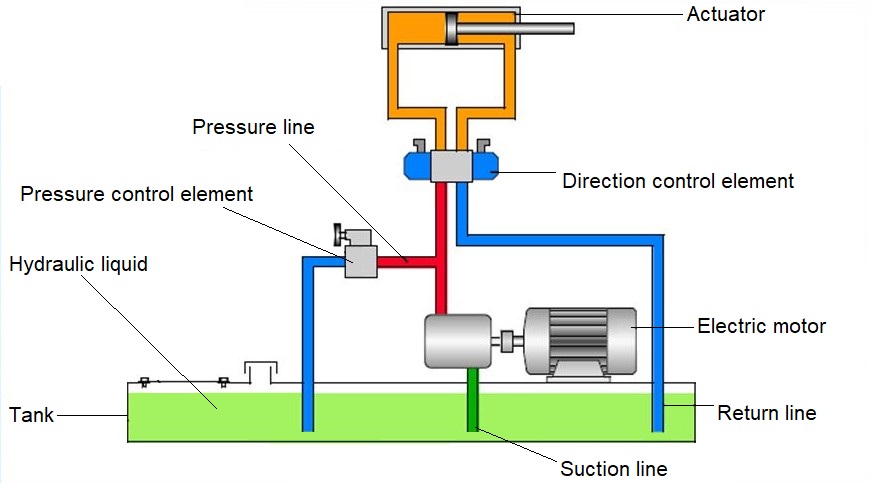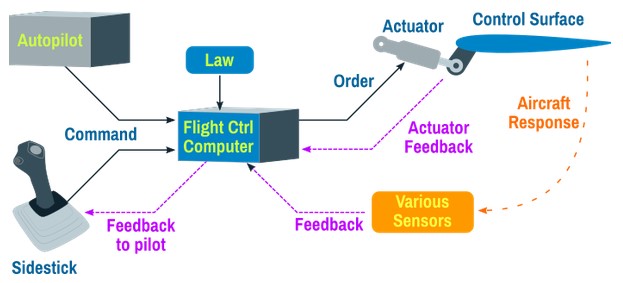¶ Introduction
A pilot uses flight control systems to control the forces of flight and the aircraft's direction and attitude. It should be noted that flight control systems and characteristics can vary greatly depending on the type of aircraft flown. The most basic flight control system designs are mechanical and date back to early aircraft. Flight control systems are subdivided into what are referred to as primary and secondary flight controls.
¶ General priciples
For steady flight, aircraft must be in a state of balance (zero moments around the axes) and the controls enable this to be achieved for all possible configurations and CG (Centre of Gravity) positions.
The moment around an axis is produced by changing the aerodynamic force on the appropriate aerofoil and this may be done by:
- changing the camber of the airofoil
- changing the angle of attack (incidence) of the aerofoil
- decreasing the aerodynamics force by "spoiling" the airflow
Here are the basic rotation controls around 3 axises:
- Longitudinal axis. Rotation around the longitudinal axis is rolling and is controlled by the ailerons, or for some aircraft, spoilers, or by a combination of the two.
- Lateral axis. Rotation around the lateral axis is pitching and is controlled by elevators or by a moving tailplane.
- Normal axis. Rotation around the normal axis is yawing and is controlled by the rudder.

¶ Primary controls
Primary flight controls are required to safely control an aircraft during flight. These consist of:
¶ Secondary controls
Secondary flight controls are intended to improve the aircraft performance characteristics or to relieve excessive control loading. These consist of:
¶ Linkage
The movement of the flying control surfaces in response to the movement of the cockpit controls may be achieved:
- Mechanically. The control surfaces are connected directly to the cockpit controls by a system of cables, rods, levers and chains.
- Hydraulically. The control surfaces are moved by hydraulic power. The control valve may still be operated mechanically.
- Electrically. Movement of the cockpit control sends an electrical signal to the control surface. The movement of the control may be achieved hydraulically.
On some modern aircraft, the flying controls are subjected to heavy loads due either to the movement of large control surfaces or by the operation of the controls at high speeds. To reduce the stick forces created by these heavy air loads, hydraulic or electric power is used.
The majority of powered flying controls are hydraulically operated and, depending on the degree of assistance required, will be either powered or power assisted.
¶ Mechanical
The most basic flight control systems are mechanical and, although they date back to the earliest aircraft types, are in use in the majority of light, general aviation aircraft. In this design, a collection of mechanical components such as cables, pulleys, rods and chains transmit the movement of the flight deck controls to the appropriate control surfaces.

¶ Hydro-mechanical
A hydraulic system uses a fluid under pressure to drive machinery or move mechanical components.
The complexity and weight of mechanical flight control systems increase considerably with the size and performance of the aircraft.
Hydraulically powered control surfaces help to overcome these limitations. With hydraulic flight control systems, the aircraft's size and performance are limited by economics rather than a pilot's muscular strength.
A hydro-mechanical flight control system has two parts:
- The mechanical circuit, which links the cockpit controls with the hydraulic circuits. Like the mechanical flight control system, it consists of rods, cables and pulleys.
- The hydraulic circuit, which has hydraulic pumps, reservoirs, filters, pipes, valves and actuators. The actuators are powered by the hydraulic pressure generated by the pumps in the hydraulic circuit. The actuators convert hydraulic pressure into control surface movements. The electro-hydraulic servo valves control the movement of the actuators.

¶ Fly-by-Wire
Fly-by-wire (FBW) is a system that replaces the conventional manual flight controls of an aircraft by an electronic interface
FBW is the generally accepted term for those flight control systems which use computers to process the flight control inputs made by the pilot or autopilot, and send corresponding electrical signals to the flight control surface actuators.
This arrangement replaces mechanical linkage and means that the pilot inputs do not directly move the control surfaces. Instead, inputs are read by a computer that in turn determines how to move the control surfaces to best achieve what the pilot wants.
Another advantage of FBW is Flight Envelope Protection.
Feedback control of airspeed, Mach Number, attitude and angle of attack can be used to ensure that the FBW aircraft stays within its certificated flight envelope. Two strategies are being used to achieve this:
- the Airbus strategy of` 'hard limits' in which the control laws have absolute authority control unless the pilot selects Direct Law
- Boeing strategy of 'soft limits' in which the pilot can override Flight Envelope Protection and so retains ultimate control over the operation of the aircraft.

- Pilot's Handbook of Aeronautical Knowledge by FAA - Chapter 6 Flight controls
- SKYbrary library - Elevator
- VID 531824 - Creation
- VID 496402 - Wiki.js integration